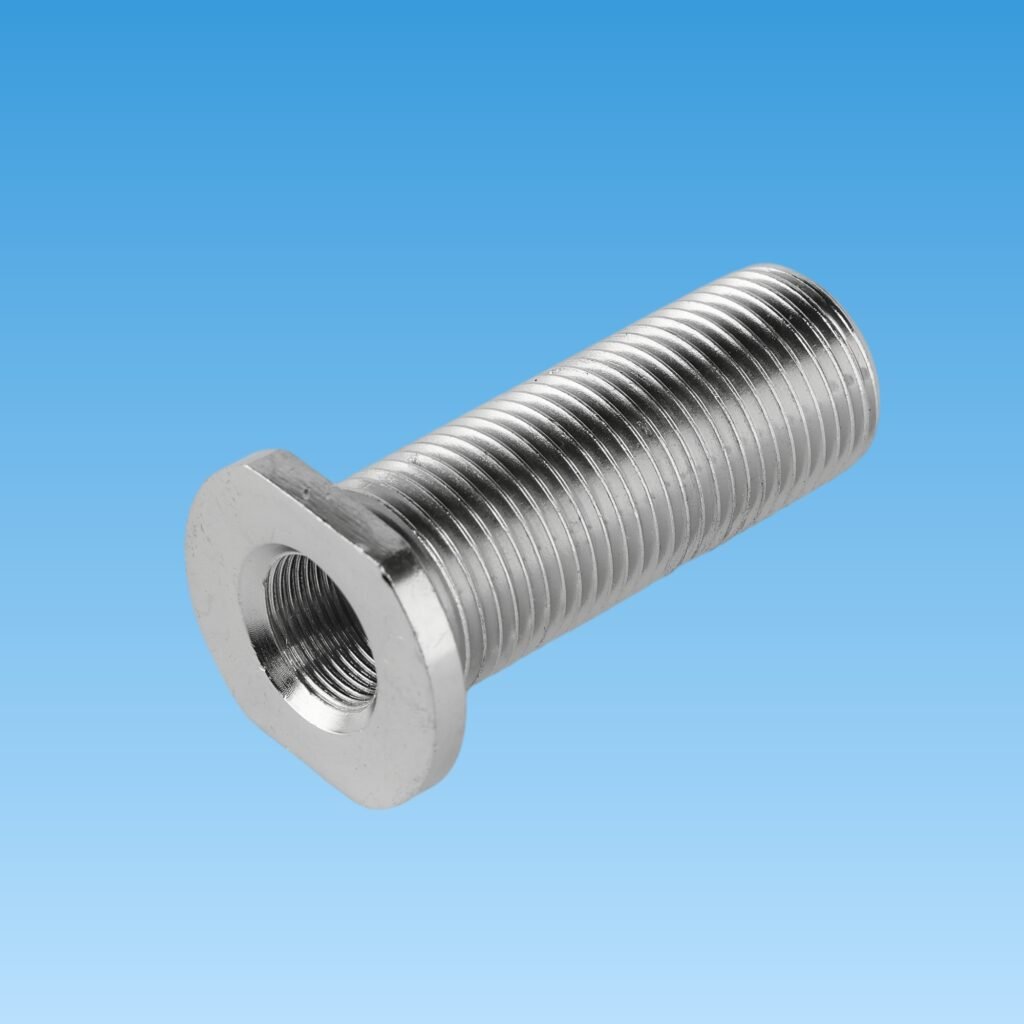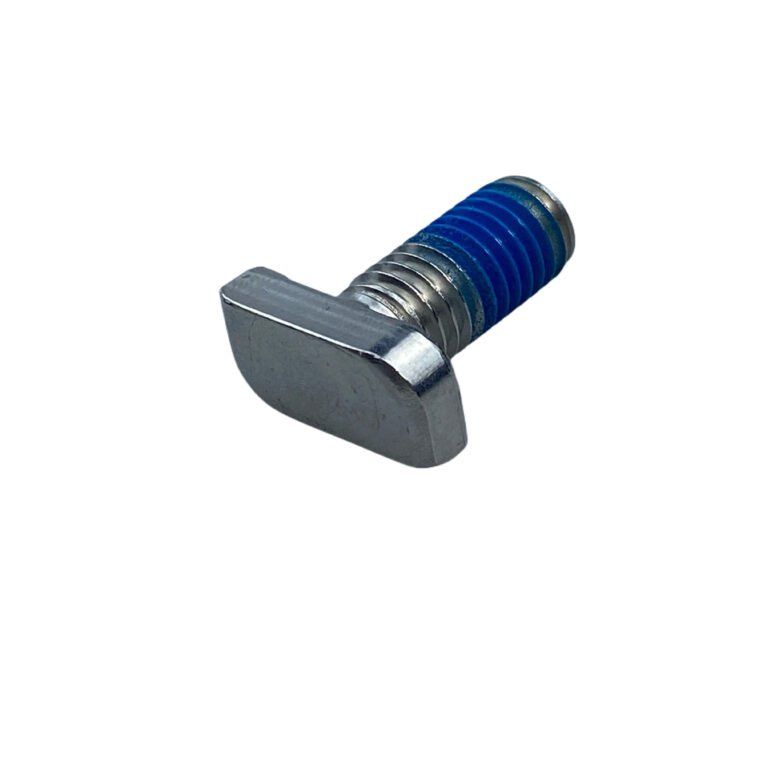Tightening a bolt might seem simple—but the forces at play are complex, and the material’s behavior changes everything.
Torque creates clamping force by stretching the bolt like a spring. The relationship depends on friction, thread geometry, and the material’s elastic modulus.

In the fastener world, I often see confusion between torque and clamping force. Many clients assume that more torque means a stronger joint. That’s not always true. If the material is too soft or the friction too high, the real clamping force could be far below expectations—or worse, the bolt could shear. That’s why understanding how torque, clamping force, and material stiffness work together is so critical in both design and production.
What is the formula for torque to clamping force?
You can’t manage what you don’t measure—and torque without force calculation is just a guess.
The basic formula to convert torque to clamping force is: T = K × F × d, where T is torque, F is clamping force, d is nominal diameter, and K is the torque coefficient.
This formula may look simple, but the tricky part is the K factor. It varies based on thread condition, lubrication, and surface finish. I’ve seen K values range from 0.15 to 0.3 in real-world conditions. So if you're using torque to control clamping, it’s important to measure actual preload during testing.
Torque-Clamping Force Formula Explained
| Symbol | Meaning | Typical Value or Unit |
|---|---|---|
| T | Torque | Nm or in-lb |
| F | Clamping Force (Preload) | N or lbf |
| d | Nominal Bolt Diameter | mm or in |
| K | Torque Coefficient | 0.15–0.30 (depends on friction) |
For example, for an M10 bolt (d = 0.01m) with a K of 0.2 and a torque of 20 Nm:
F = T / (K × d) = 20 / (0.2 × 0.01) = 10,000 N
If lubrication is added, K may drop to 0.15, increasing the force to 13,333 N at the same torque. That’s a huge difference—and a good reason to always calibrate under real conditions.
What is the result of increasing the clamping force?
More clamping force isn’t always better. Beyond a point, it can lead to part deformation or bolt failure.
Increasing clamping force improves joint strength and reduces loosening—but too much can crush softer materials, stretch bolts beyond yield, or crack flanges.

One client once increased torque values to "make sure the joint stays tight." The result? Several bolts snapped during assembly, and others stripped threads. They were working with aluminum flanges and standard carbon steel bolts—clearly not a good mix for brute-force tightening.
Effects of High Clamping Force
| Outcome | Cause | Risk Level |
|---|---|---|
| Higher joint friction | More preload reduces slip | Positive if within limits |
| Bolt stretch | Excessive force exceeds yield point | Leads to fatigue failure |
| Flange deformation | Softer parts deform under load | Causes misalignment |
| Thread stripping | Overload exceeds thread shear strength | Often irreversible |
I always recommend balancing clamping force with joint material and load expectations. Sometimes, using a washer or larger contact area solves the issue without needing more torque.
Is clamping force entirely dependent on input torque?
Torque is only one part of the story—many other factors affect how much preload is actually generated.
Clamping force depends on input torque, but also on thread condition, lubrication, surface friction, and the elastic modulus of the bolt.
I once tested two identical bolts—one clean, one with anti-seize lubricant. At the same torque, the lubricated bolt had nearly 40% higher preload. That’s because less torque was lost to friction, meaning more was used to stretch the bolt.
What Affects Clamping Force Besides Torque?
| Factor | Impact on Clamping Force | Control Method |
|---|---|---|
| Lubrication | Reduces friction, increases preload | Use consistent lubricant |
| Surface finish | Rough threads create more friction | Avoid rust or debris |
| Thread pitch & size | Affects torque-transmission efficiency | Use coarse threads for strength |
| Elastic modulus | Determines how much the bolt stretches | Choose bolt grade to match joint |
That’s why in critical applications, I don’t rely on torque alone. We use torque-angle control or even direct tension-measuring bolts when necessary.
How do you reduce clamping force?
Sometimes, too much force can damage parts—and lowering it can actually make the assembly safer and longer-lasting.
To reduce clamping force, lower the input torque, increase the K factor (friction), or use larger diameter bolts to spread the load over more threads.

One of my customers makes housings out of soft plastics. When they used standard steel screws with recommended torque, the plastic around the holes cracked. We solved it by switching to lower torque settings, increasing the contact area, and using thread-forming screws.
Methods to Reduce Clamping Force
| Method | Description | When to Use |
|---|---|---|
| Lower torque value | Directly reduces preload | When joint stress must be minimized |
| Increase friction (K factor) | Adds resistance to bolt rotation | When precision preload is not critical |
| Use wider washers | Distributes load over a larger surface | Prevents damage in soft materials |
| Use thread-locking adhesive | Reduces need for high preload | Helps in low-load applications |
It's not just about making the joint tight—it’s about making it last. Especially for delicate parts or low-strength materials, controlling clamping force is about protection, not just performance.
Conclusion
Torque, clamping force, and material elasticity are closely linked. To build safe, strong joints, you must understand how input torque translates into preload—and how to control it under real-world conditions.


